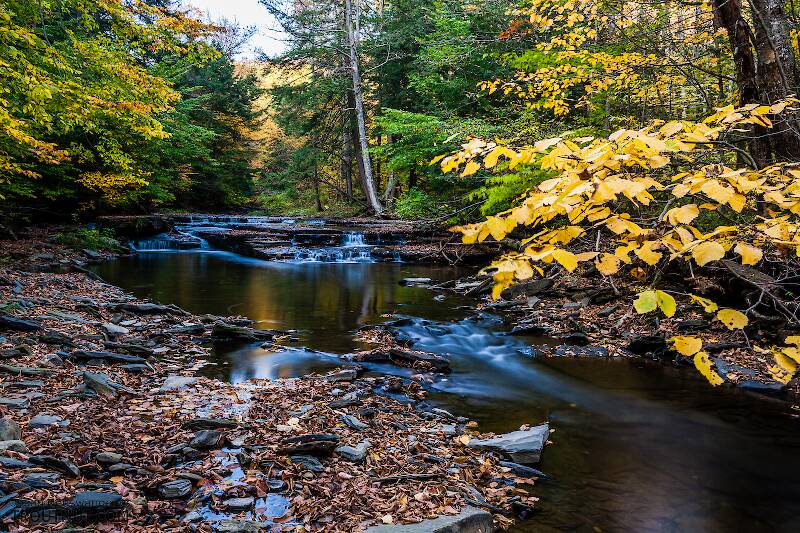
Blue-winged Olives
Baetis
Tiny Baetis mayflies are perhaps the most commonly encountered and imitated by anglers on all American trout streams due to their great abundance, widespread distribution, and trout-friendly emergence habits.


Mayfly Species Paraleptophlebia vaciva
Species Range
Physical description
Most physical descriptions on Troutnut are direct or slightly edited quotes from the original scientific sources describing or updating the species, although there may be errors in copying them to this website. Such descriptions aren't always definitive, because species often turn out to be more variable than the original describers observed. In some cases, only a single specimen was described! However, they are useful starting points.
Male Spinner
Wing length: 8 mm
This is a graceful black and white species with faintly tinted wings. Head, thorax, front coxae, and the end segments of the abdomen are shining brownish black. Fore legs tawny, with touches of brown on trochanter, knees, and both ends of tarsi. Other legs whitish with a touch of brown at the knees and tips of tarsi. Wings sub-hyaline, with the long veins of the costal strip brown as are also the widely spaced and regular cross veins of the stigmatic area.
Abdomen strikingly bicolored. Segment 1 black, 2 to 7 translucent white with conspicuous brown marks on the ganglia beneath and with faint mid-dorsal clouds above; these become darker on the 6th segment and spread diffusely over more than half of the 7th. Segments 8 to 10 are blackish above and brownish beneath. Forceps pale brown. Penes long, separated by a narrow cleft, tapering in the basal half, then irregularly cylindric, bearing externally a visor-like backwardly-directed barb half their own length from the tip (see fig. 133). Tails whitish.
Start a Discussion of Paraleptophlebia vaciva
References
- Knopp, Malcolm and Robert Cormier. 1997. Mayflies: An Angler's Study of Trout Water Ephemeroptera . The Lyons Press.
- Needham, James G., Jay R. Traver, and Yin-Chi Hsu. 1935. The Biology of Mayflies. Comstock Publishing Company, Inc.
Mayfly Species Paraleptophlebia vaciva
Species Range
Resources
- NatureServe
- Integrated Taxonomic Information System
- Global Biodiversity Information Facility
- Described by Eaton (1884)

